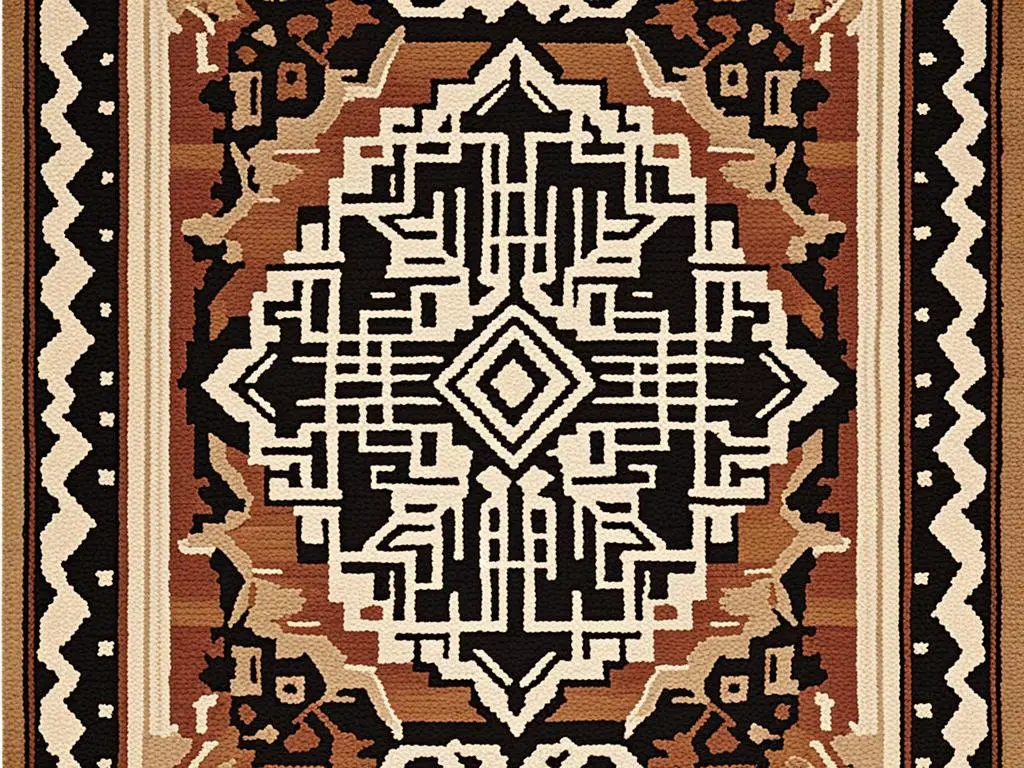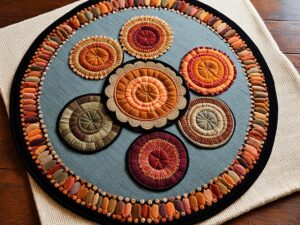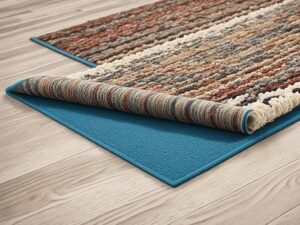When it comes to evaluating the quality of a rug, one important factor to consider is the knot count or knot density. This refers to the number of hand-tied knots within a specific area of the rug. Knot count is measured in knots per square inch (KPSI) and can provide insights into the craftsmanship and intricacy of the rug.
However, it’s important to note that a higher knot count does not necessarily indicate better quality. Good quality Persian rugs, for example, can range from 85 KPSI to over 500 KPSI. Knot count is just one aspect to consider when assessing the value and appeal of a rug.
So, how many knots per square inch is a good rug? Let’s explore this further.
Key Takeaways:
- Knot count, or knot density, is the number of hand-tied knots within a specific area of a rug.
- Higher knot counts do not necessarily indicate better quality, as good quality Persian rugs can range from 85 KPSI to over 500 KPSI.
- Factors such as age, condition, design, materials, and overall appeal also contribute to the value and quality of a rug.
- When buying a rug, it’s important to choose one that fits your personal style and aesthetic preferences.
- Knot count alone should not be the sole basis for making a purchasing decision.
What is Knot Count and How Important is it?
Knot count, or knot density, is a crucial aspect to consider when evaluating the quality of a hand knotted rug. It refers to the number of hand tied knots within a specific area of the rug. However, it is important to note that knot count alone does not determine the overall quality of a rug.
Examining the back of a rug allows us to determine the knot count, which is usually measured in knots per square inch (KPSI). The higher the knot count, the more intricate and detailed the design of the rug can be.
Hand knotted rugs are constructed using warp, weft, and knots. The two most common knot types used in rug making are the Persian knot and the Turkish knot. These knots contribute to the overall knot count and affect the level of detail and fineness in the rug’s design.
A higher knot count often indicates a more finely knotted rug, but it should not be the sole indicator of quality. Other factors such as materials used, craftsmanship, design, and overall appeal should also be taken into consideration when assessing the value of a rug.
Quotes:
Knot count, or knot density, refers to the number of hand tied knots within a specific area of a rug.
While knot count can tell us about the level of detail and fineness of a rug, it does not necessarily determine the overall quality.
List:
- Hand-tied knots
- Warp, weft, and knots
- Persian knot and Turkish knot
- Factors affecting quality and value
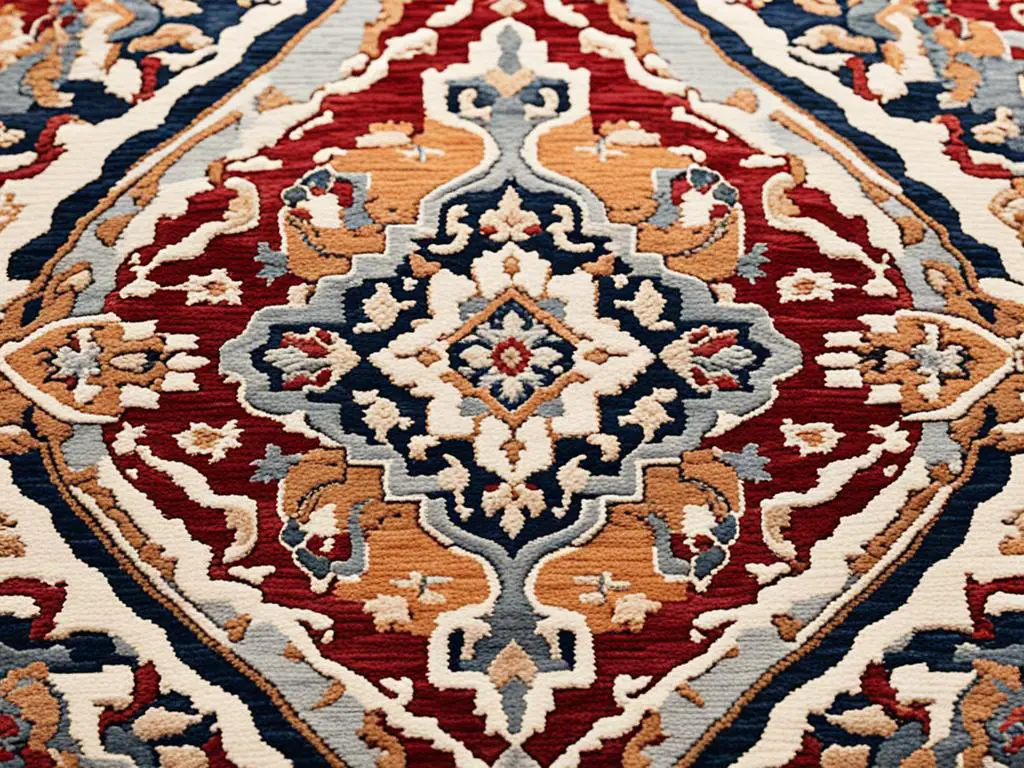
How to Count Rug Knots
When evaluating the quality of a rug, one important factor to consider is the knot count. To accurately determine the knot count, a close examination of the back of the rug is necessary. Here’s a step-by-step guide on how to count rug knots:
- Start by locating the warps of the rug. These are the vertical threads that run the length of the rug.
- Typically, the warps lie in the same plane and each knot will appear as two squares of the same color next to each other from east to west on the rug.
- However, if the warps lie offset, the second node of the knot may be hidden.
- Count each pair of nodes as one knot. This means that if you see two squares of the same color next to each other, count them as a single knot.
- Be aware that different types of knots may have offset warps. The two most common knot types used in rug making are the Persian knot and the Turkish knot.
- To determine the knots per square inch (KPSI), count the number of knots within a one inch vertical and one inch horizontal area, and then multiply the two numbers together.
By following this process, you can accurately count the number of rug knots and calculate the knot density of a particular rug.
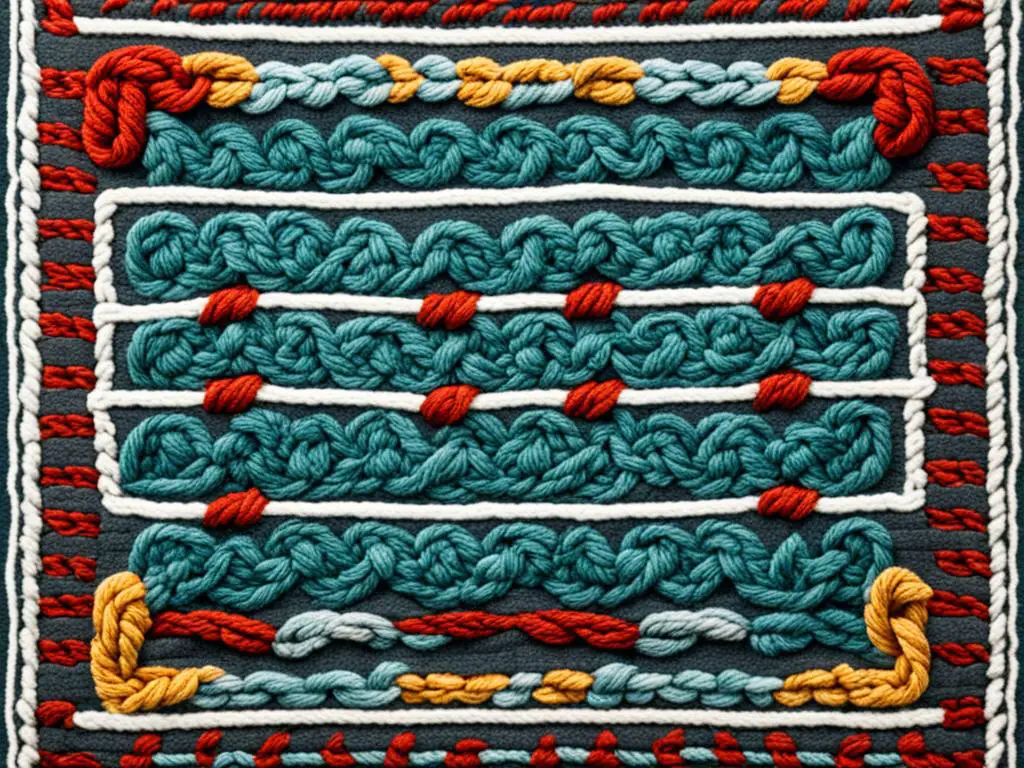
A higher knot count does not necessarily indicate better quality. Other factors such as design, materials, and overall appeal should also be considered when evaluating a rug.
What Knot Count Tells Us
Knot count in rugs can provide valuable insights into their construction, origin, and level of detail. While knot count is an important factor, it should be considered in conjunction with other aspects when evaluating the overall quality and value of a rug.
Rugs with higher knot counts are often associated with city environments and skilled artisans who specialize in intricate designs. These rugs are meticulously crafted with a greater number of knots per square inch, allowing for the creation of more detailed and curvilinear patterns. With their fine knotting, these rugs exhibit a level of artistry and craftsmanship that is highly sought after by collectors and enthusiasts.
On the other hand, rugs with lower knot counts are typically made by nomadic tribal groups or in less refined settings. These rugs are characterized by bold and geometric patterns, which are better suited for larger and more simplistic designs. Despite having fewer knots per square inch, these rugs can still possess beauty and charm, particularly in their vibrant colors and cultural significance.
However, it is important to note that knot count alone does not determine the quality of a rug. Factors such as age, condition, colors, and general appeal also contribute to its overall value and desirability. A rug with a lower knot count may still hold significant historical or cultural value, while a rug with a higher knot count may lack the charm and character found in antique or vintage pieces.
To illustrate the correlation between knot count, rug construction, and origin, consider the following table:
| Rug Origin | Knot Count Range (KPSI) | Characteristic |
|---|---|---|
| Persian Rugs | 150 – 600 | Fine knotting, intricate designs |
| Turkish Rugs | 60 – 300 | Varied knotting styles, both fine and coarse |
| Tribal Rugs | 30 – 100 | Bolder, geometric patterns |
The table above highlights the average knot count range for Persian, Turkish, and tribal rugs, giving a glimpse into the diversity of construction styles and cultural influences. It is worth noting that these ranges can vary and overlap, as there is no strict rule for knot counts in rug making.
Ultimately, when assessing a rug’s quality and value, it is crucial to consider knot count alongside other factors such as construction techniques, material quality, age, condition, and personal preferences. By taking a holistic approach, you can make an informed decision and find a rug that not only reflects your aesthetic taste but also carries the story and heritage of its origin.
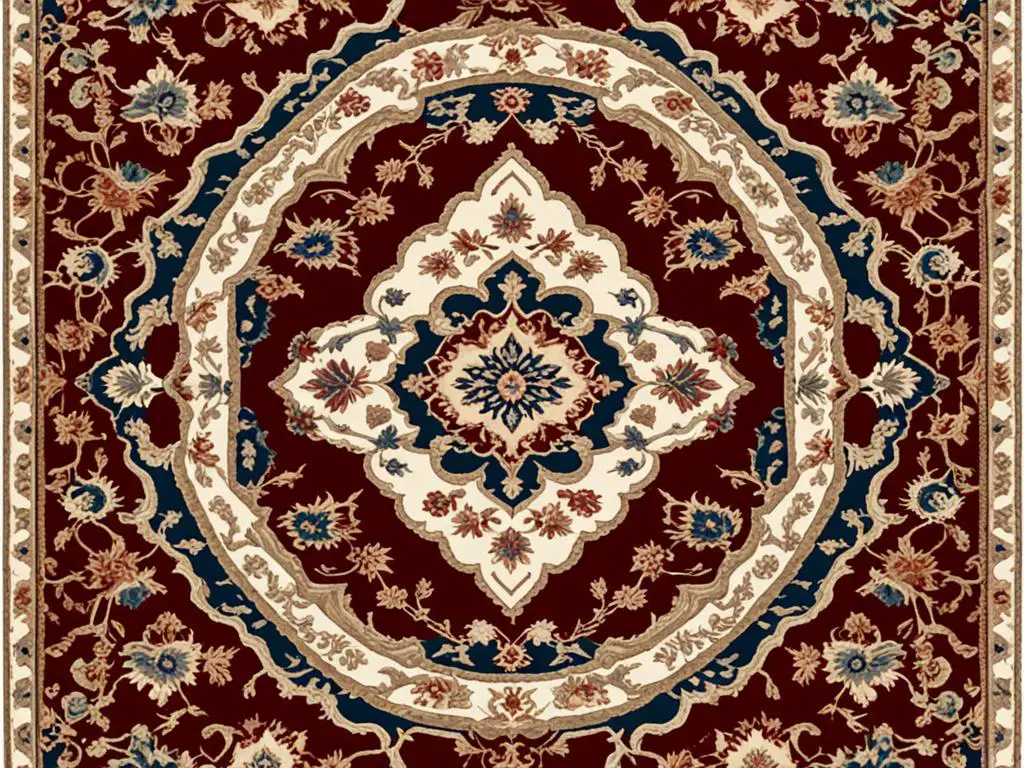
Knot Count and Rug Cost
When considering the cost of a rug, knot count is one of the factors that often comes to mind. However, it’s important to understand that knot count is not a direct indicator of rug cost. While there is a general correlation between knot count and rug price, it should not be the sole basis for making a purchasing decision.
Good quality Persian rugs, for example, can have knot counts ranging from 85 knots per square inch (KPSI) to over 500 KPSI. The higher the knot count, the longer it takes to make the rug, which can result in a higher price. However, the cost of a rug is influenced by various other factors as well.
The materials used in the rug, such as the type of wool or silk, can greatly impact its cost. Rugs woven with high-quality materials tend to be more expensive. Additionally, the design intricacy and overall appeal of the rug play a significant role in determining its price. A rug with a complex design or a rare pattern may be priced higher due to its uniqueness.
It’s worth mentioning that the value of Persian rugs is not solely determined by knot count. These rugs carry a rich history and are highly sought after for their craftsmanship. The intricate details and exquisite artistry found in Persian rugs contribute to their value, regardless of knot count.
“The cost of a rug is influenced by various factors, including knot count, materials used, design intricacy, and overall appeal.”
When purchasing a rug, it’s essential to evaluate these factors holistically to determine its value. Knot count is just one aspect to consider and should be viewed in conjunction with other elements of rug construction and design.
Comparing Knot Count and Rug Cost
| Knot Count Range (KPSI) | Average Rug Cost |
|---|---|
| 85-150 | $$ |
| 150-250 | $$$ |
| 250-350 | $$$$ |
| 350+ | $$$$$ |
As shown in the table above, rugs with higher knot counts generally come at a higher cost. However, it’s important to note that knot count doesn’t tell the whole story. Factors such as materials, design intricacy, and overall appeal significantly impact the price of a rug.
When considering a rug purchase, take the time to appreciate the craftsmanship, design, and overall beauty of the rug. Choose a rug that speaks to you and fits your personal style, rather than solely relying on knot count or cost. In the end, it’s the rug’s ability to enhance your space and bring joy to your life that truly matters.
Knot Count and Rug Value
Knot count is just one factor that contributes to the value of a rug. In addition to knot count, factors such as age, condition, design, materials, and overall appeal all influence the value of an Oriental rug. True antique Persian rugs, for example, are valued for their age, condition, and appeal, in addition to their knot count. Knot count alone does not provide an accurate sense of the quality and value of a rug.
It is important to consider all aspects of a rug when determining its value and to make a purchasing decision based on personal preference and enjoyment.
Factors Influencing Rug Value
- Age: Older rugs, particularly those with historical significance, are often highly valued and can command higher prices.
- Condition: The overall condition of the rug, including any damage or wear, can impact its value. Well-preserved rugs in excellent condition tend to be more valuable.
- Design: The complexity and intricacy of the rug’s design can play a role in its value. Rugs with unique patterns or rare designs are often more sought after.
- Materials: The quality of the materials used in the rug’s construction, such as the type of wool or silk, can affect its value. Higher quality materials typically result in a higher value.
- Overall Appeal: The aesthetic appeal of the rug, including its colors, motifs, and overall visual impact, can influence its value. Rugs that are visually striking and harmoniously designed are often more valuable.
When determining the value of a rug, it is important to consider these various factors and evaluate the rug as a whole. Knot count alone does not provide a comprehensive picture of the rug’s value, and it should be considered in conjunction with these other important elements.
Conclusion
When it comes to buying a rug, the knot count is an important factor to consider in determining its quality and value. However, it should not be the sole basis for making a purchasing decision. There are several other factors that contribute to the overall appeal and worth of a rug.
Factors such as the rug’s age, condition, design, materials, and overall aesthetic appeal all play a role in determining its value. While a high knot count may suggest a higher level of detail and fineness, it does not guarantee superior quality. It is crucial to assess the rug holistically and consider all these elements.
Ultimately, when buying a rug, it is essential to choose one that you love and that aligns with your personal style and aesthetic preferences. Don’t solely rely on the knot count, but take into account the overall appeal and enjoy the rug for years to come.
